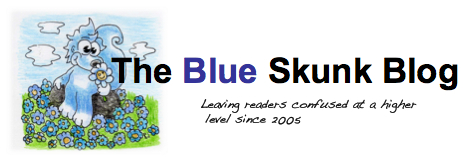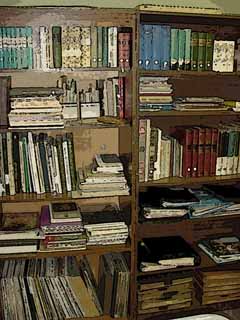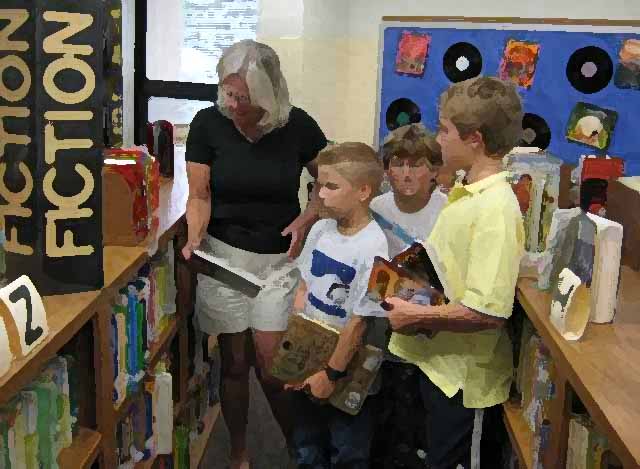School libraries as a "third place"
 Monday, February 16, 2009 at 07:01AM
Monday, February 16, 2009 at 07:01AM The third place is a term used in the concept of community building to refer to social surroundings separate from the two usual social environments of home and the workplace. - Wikipedia
Coined by sociologist Ray Oldenburg in his book A Great Good Place, the term "third place" has come to describe an area for informal social gathering outside of home (first place) and work (second place). Oldenberg suggests such environments are necessary for a healthy society.
A lecture by Constance Steinkuehler introduced me to this term. Steinkuehler's assertion was that online game environments like those in World of Warcraft become third places for the users*. Since I am not a gamer, I more or less forgot the term.
Until I started doing some reading and thinking about library design in the secondary schools. Might, just might, the school library serve as a "third place" for students and staff, especially in locations where other "third places" such as teen-oriented libraries, coffee shops or YMCAs do not exist?
This idea has been explored by public and academic librarians.** Several of the criteria of a third place are evident in how Valerie Diggs transformed her high school library into what she calls a "learning commons***."
What are some of the characteristics of the third place? Oldenburg writes:
"The character of a third place is determined most of all by its regular clientele and is marked by a playful mood, which contrasts with people's more serious involvement in other spheres. Though a radically different kind of setting for a home, the third place is remarkably similar to a good home in the psychological comfort and support that it extends…They are the heart of a community's social vitality, the grassroots of democracy, but sadly, they constitute a diminishing aspect of the American social landscape."
Chiarella describes her attempt to create a third place atmosphere in her public library:
We are working to encourage a teen presence at the library in a number of ways. We have a “Teen Zone” section of Youth Services dedicated to teen (grades 7 through 12) fiction, a non-fiction browsing section, manga, graphic novels, music CDs, magazines, and teen-oriented DVDs. We are planning to expand our regular book displays to periodic “issue” displays featuring books and take-home literature on teen pregnancy, teen drinking, drugs, eating disorders, etc. We have tables/chairs and soft rocker-type chairs in the Teen Zone where teens can hang out with friends. Computers are close by and are available to all students under 17.
Yes, yes, I also understand that school libraries have a serious academic mission. And that one runs the risk of trivializing the school library program if efforts to create a social environment overshadow its educational role.
Is there a happy medium? Might the school library be the third place outside of regular school hours? Might some sections of the library be third place "zones"?
A comment by a student many years ago (and to which I often refer) has stuck by me - that the school library was his "home away from home." Schools do have the societal charge of helping teach social skills to students. Might actively working to make school libraries the students' third place do this?
________________________________________
* Steinkuehler, C. & Williams, D. (2006). Where everybody knows your (screen) name: Online games as “third places.” Journal of Computer-Mediated Communication, 11(4), article 1.
** From the NSLS website:
- Third Place is Our Place by Anna Yackle, NSLS
- The Public Library: A Third Place for Teens by Joanne Chiarella, Fremont Public Library District
- Creating a Third Place from a Diverse Academic Community by Betsy Larson, University Center of Lake County
*** Loertscher, The New Learning Commons Where Learners Win! Reinventing School Libraries and Computer Labs.









